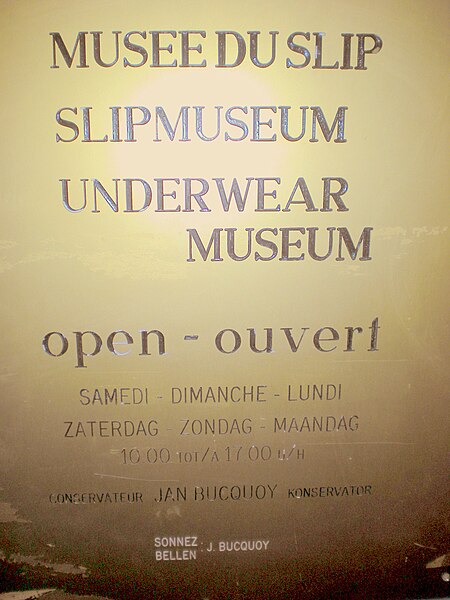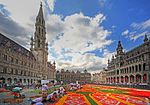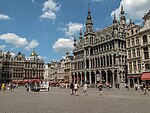Underwear Museum
2009 establishments in BelgiumBuildings and structures in Hainaut (province)Museums established in 2009Museums in Hainaut (province)Undergarments

The Underwear Museum (French: Musée du slip, Dutch: Slipmuseum) is a museum in Lessines, Hainaut, Wallonia, Belgium which displays the underclothing of famous persons; each article was worn at least one time by the person in question and is combined with a certificate of authenticity. It also has artistic depictions of famous people wearing underwear.
Excerpt from the Wikipedia article Underwear Museum (License: CC BY-SA 3.0, Authors, Images).Underwear Museum
Rue des Éperonniers - Spoormakersstraat, Brussels Pentagon (Brussels)
Geographical coordinates (GPS) Address Nearby Places Show on map
Geographical coordinates (GPS)
| Latitude | Longitude |
|---|---|
| N 50.845111 ° | E 4.353224 ° |
Address
Rue des Éperonniers - Spoormakersstraat 50
1000 Brussels, Pentagon (Brussels)
Belgium
Open on Google Maps











